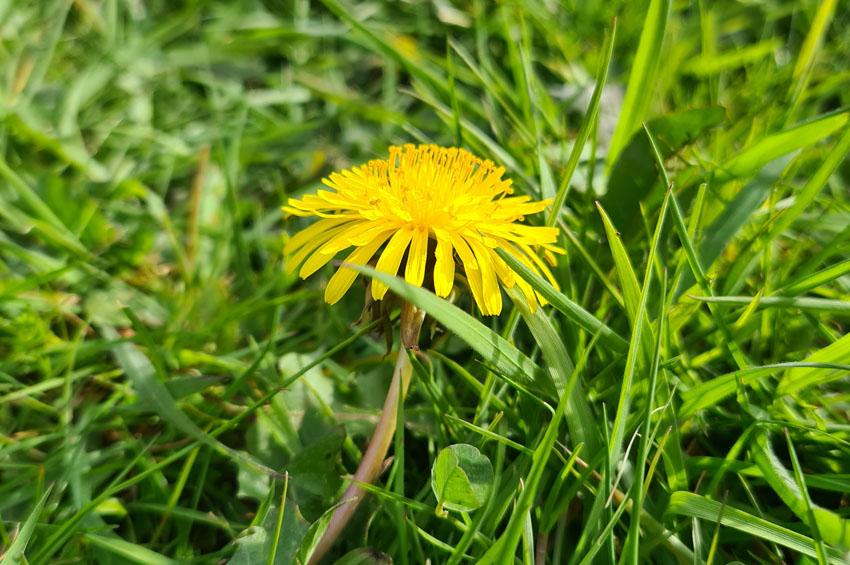
Created By
Matt Adams
Updated On
- March 1, 2024
Get FREE Exclusive Access
Keep your lawn pristine with exclusive tips, offers and insights that I only share with my private subscribers.
Latest Posts
Weed & Feed for lawns – DO you or DON’T you?
- By Matt Adams
- March 1, 2024
Jump to
Get FREE Exclusive Access
Keep your lawn pristine with exclusive tips, offers and insights that I only share with my private subscribers.
The big question – Should I weed and feed or should I weed THEN feed?
In this article, I’m going through all the pros and cons of using weed and feed on the lawn. I’ll explain the benefits of weeding then feeding rather than using an all-in-one granule feed. I’ll even suggest some organic alternatives to man-made pesticides.
Then I’ll go through the process of weeding and feeding your lawn
Weed and feed is searched around 56,000 times per month on Google UK alone. So it’s clearly a problem for many lawn owners and just like you, they probably want to find out how to combat their weed problem without killing the lawn once and for all.
So here’e the structure of this article. If you want to just jump to the section that intrigues you most, go ahead.
- What is lawn weed, feed & Moss killer?
- Why it helps lawns
- What are the negatives to using this pesticide?
- Is it better to weed THEN feed – what’s the difference?
- When & how often to use weed and feed on your grass
- How to apply weed feed and moss killer using a spreader
- How long does it take to kill dandelions?
- How to avoid the need for weed and feed
- Types of weed found in a UK lawn (coming soon)
Best Lawn Weed Products
available top dressing
-
Lawn Weed & Feed Liquid (Spring to Autumn)
- £9.90 – £27.50
- Select options This product has multiple variants. The options may be chosen on the product page
-
Selective Lawn Weed Killer Spray – Kills Weeds Not Lawns
- £6.95
- Rated 5.00 out of 5
- Add to basket
-
Weedol Selective Lawn Weed Killer – For Lots of Weeds
- £9.95 – £14.65
- Select options This product has multiple variants. The options may be chosen on the product page
What is lawn weed, feed and moss killer?
This is a product that’s designed to kill off weeds without killing the lawn. Not just that though. It also helps the lawn thrive by giving it a good dose of nitrogen (the growth nutrient). Similar to how a quick release Spring Lawn Feed works.
I can’t talk for all, but our main product works on the following weeds –
- Common Dandelion (Taraxacum officinale)
- Creeping Buttercup (Ranunculus repens)
- Creeping Cinquefoil (Potentilla reptans)
- Daisy (Bellis perennis)
- Greater Plantain (Plantago major)
- Birds-foot Trefoil (Lotus corniculatus)
- Lesser Trefoil (Trifolium dubium)
- Mouse-ear Chickweed (Cerastium fontanum subsp. Vulgare)
- Ribwort Plantain (Plantago lanceolata)
- Selfheal (Prunella vulgaris)
- Thyme leaved speedwell (Veronica serpyllifolia)
- White Clover (Trifolium Repens)
You an also buy liquid weed killers, such as Fluroxypyr, Clopyralid which won’t necessarily feed the lawn but will kill the weeds without harming the grass.
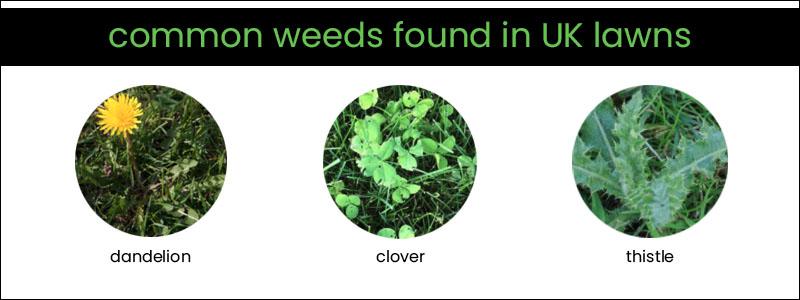
Why it helps lawns
The reason it helps lawns is because the high amount of nitrogen content feeds the grass to make it grow faster and look greener. The pesticide in the product kills weeds but not lawns. If it claims to kill moss, the It’s also highly likely that it contains iron (Fe) which is again is suppressive to moss but not lawns.
What are the negatives to using weed and feed – is it poisonous?
Some weed and feed products can be poisonous to pets and especially dogs.
More so than the weed plants themselves. Don’t forget though, a fresh lawn can be a great alternative to having too many border plants, which can be poisonous for dogs too.
What’s more, the iron in the product can stain your pets fur. Be sure to read the labels of any weed and feed product you purchase so you know what the implication are of letting pets use the area after application.
Is it better to weed THEN feed?
If you have pets, yes it probably is. That’s because you can use a liquid-based weed killer that only needs a few hours to absorb into the grass. A couple of treatments will be able to kill off any weeds but won’t kill the grass. Always read the label of any product you purchase before using it or letting pets on the treated areas.
If you do decide to get rid of the weeds first, then you can also use a ‘spot’ weed killer meaning you’ll only treat the broad leaf species.
When & How often to use weed and feed on the grass
Most of them can be used every 6 to 8 weeks during the Spring, Summer and Autumn. Bear in mind though that because they have high levels of nitrogen in them, you may not want to apply the same weed and feed products all through the seasons.
Feeding your soil too much nitrogen can have drawbacks.
At best it will create excess thatch that will need scarifying and an overseed, to the worse end whereby it scorches the lawn and makes it look brown.
Some scorch though, may only be visible for a short time, like the next couple of mows after application.
Personally, I recommend using it once per year, when the weather is cool, wet and you’re looking for growth. Other than that, it’s best to weed THEN feed with a fertiliser specific for the time of year needed.
How to apply weed and feed using a spreader
The usual application rate is between 30-35g per m2. So you will always want to make sure you measure out a specific area on your lawn, then weigh the right amount out before putting it in your spreader.
I go into more detail about spreaders in my article – How, why & when to sow grass seed. There are a few different types of spreader you can buy. If your lawn is over 150m2, then I’d suggest investing in a spreader with wheels.
You should check the instructions for the spreader to find out how much it releases within a given time and what setting it should be on for the correct application rate. Each brand will have different speeds and therefore may determine how fast you should walk when covering the area.
How to avoid the need for weed and feed
Stay on top of the lawn’s health
By far the best way for avoiding the need to use herbicides is by staying on top of the lawn itself. Applying regular lawn feeds at intervals during the year will help minimise weeds out-competing your grass.
Then, any broad leaved weeds can be removed by hand because they will be few and far between. When removing by hand, be sure to get right down to the root of the plant.
Let the weeds grow naturally
I know it sounds wierd coming from a lawn enthusiast but…
Not ALL lawns need to be perfect. In fact many of the weeds that grow in the lawn are actually really beneficial for bees and other pollinators. In fact, I currently have one lawn which I don’t touch and just watch the bees come and go from it when the dandelions bloom.

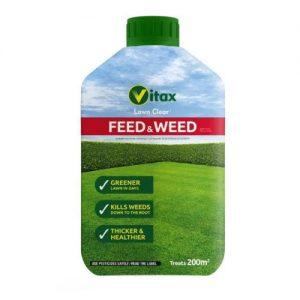
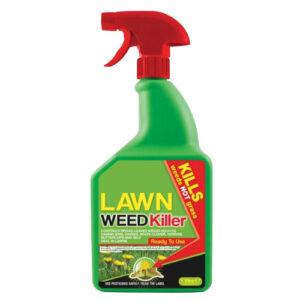
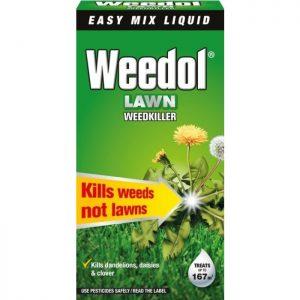
This Post Has 2 Comments
Can you put weed and feed on lawns now?
Not really, but if you do want to, then it’s best to use this product if it’s above 10 degrees and no frost is forecast within the following week. Autumn Lawn Weed & Feed Liquid